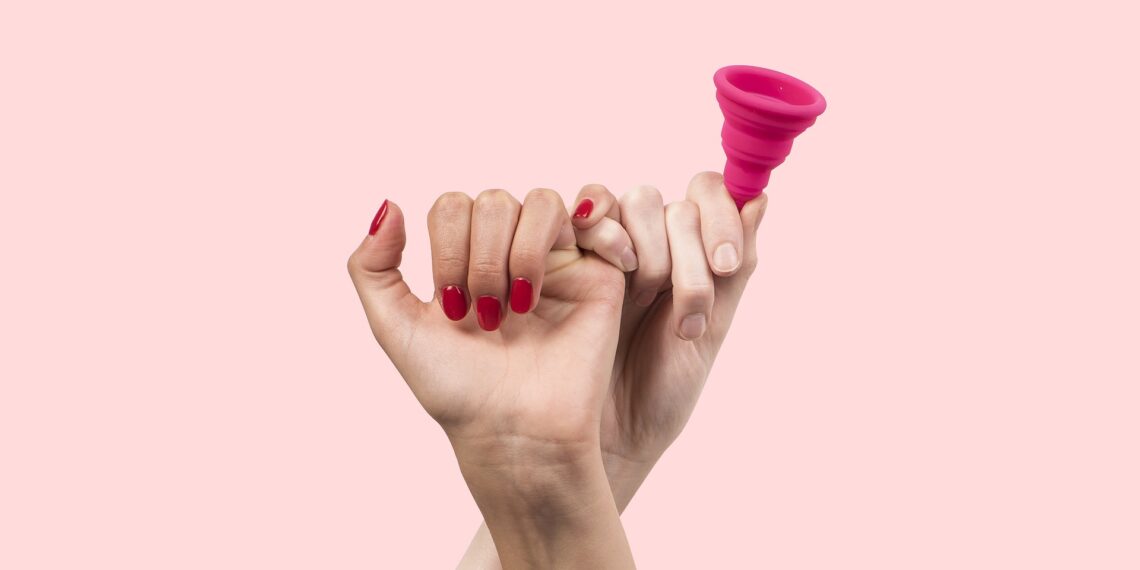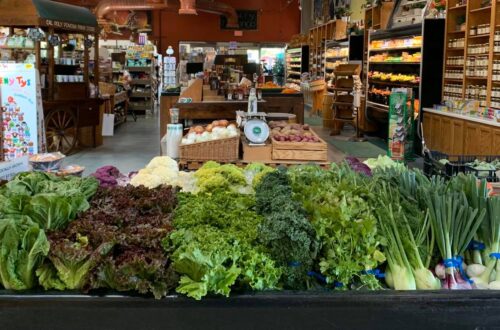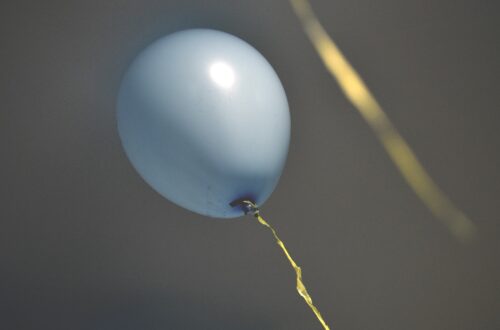
It’s Time to Try a Cup – This Post is about Periods
Traditional period products are expensive, wasteful, uncomfortable, and packed with plastic and other harmful chemicals. I started hearing about alternative period products a few years ago, things like The Diva Cup and Thinx, but was too afraid to make the switch, until this year. I’ve now been using my menstrual cup for six months and regret nothing except not making the change sooner.
Alternative period products started grabbing my attention right off the bat because they seemed like a way to save money and cut back on waste. An average woman will have her period for around 40 years and, assuming the average period lasts five days, the average woman spends about 2,400 days or about six and a half years over the course of their lifetime on their period. Spending anywhere from $150 to $300 a year on feminine hygiene products, the average woman will spend, on the conservative end, over $6,000 on period products alone over the course of their lifetime. Most women are spending that money on traditional period products, such as tampons and pads. In fact, the average woman will use over 11,000 tampons over her lifetime! That adds up to approximately 20 billion pads, tampons and applicators being dumped into North American landfills every year. That’s a lot of waste and a lot of plastic!
Traditional period products are filled with plastic and harmful chemicals. The average menstrual pad is in fact 90% plastic and a regular pack of pads, contains the same amount of plastic as four plastic bags. With all that plastic, a single pad can take 500 to 800 years to decompose. Even taking the applicator out of the question, tampons are 6% plastic.
If plastic isn’t your concern, recently a national women’s health nonprofit, Women’s Voices for the Earth, tested a variety of tampons including organic, mainstream and dollar store brands and found –
“carbon disulfide, a known reproductive toxin, in all four brands of tampons that contain rayon. Carbon disulfide is a chemical that is predominantly used in the manufacture of rayon; it was not detected in the all-cotton tampons that were tested. Additionally, some brands of tampons contained other volatile organic compounds including reproductive toxins, toluene and xylene, as well as carcinogen, methylene chloride. (Methylene chloride, commonly found in paint strippers, has made headlines recently for its link to over 50 deaths since 1980).”
NEW TAMPON TESTING REVEALS UNDISCLOSED CARCINOGENS AND REPRODUCTIVE TOXINS
Considered medical devices, menstrual products are not required by the FDA to list their ingredients. Beyond the Women’s Voices for the Earth study, other tests have found pesticide residue, parabens and phthalates linked to hormone disruption, antibacterial chemicals like triclosan, and various carcinogens including styrene and chloroform in tampons and pads.
The more I started to learn about period products and the more I started to actively care about my footprint on the planet the more I knew I needed to make a change.
First I considered the period panty, but I hate pads and imagined that wearing absorbent underwear would probably feel similar if not worse. For about a second, I considered reusable pads, but again, I don’t like pads, so that was a dumb consideration to start with. Pretty much right off the bat, I knew a menstrual cup was my only realistic option, but it was an option that really scared me for a long time.
In my head, I couldn’t imagine how it could be comfortable or easy to use. I thought it would be awkward and messy. I also was afraid of making the switch, although not “expensive” menstrual cups are usually $20+ and I didn’t want to buy something that I might not be able to make work (even writing that out I feel lame, but hey, I was looking for any excuse not to take this “scary” leap.) So I kept ignoring the voice in my head that kept telling me I had to make the change. Until I couldn’t take it any longer, and decided it was time to stop thinking about making the change and really start researching what I was considering getting myself into. I finally faced the fact I was scared of something I knew very little about.
I want to say I did the adult thing and started researching and reading up on menstrual cups, but I took to YouTube. Although I know you can’t trust everything you see online and sometimes people are paid to say things or share things and sometimes people have bad information, but I went to YouTube knowing I’d still have to do more research, but wanting to first see real people’s experiences with the cup. I didn’t know anyone that used a cup at the time (later I would come to learn other people in my life had already made the switch but weren’t talking about it…more on that later), and I wanted to hear from a relatable person’s mouth; someone not trying to sell me something and giving me all the details not just the good parts.
I watched several videos, but this was the one that really stuck with me and pretty much convinced me to take the leap.
I’ll admit, I didn’t watch the entire thing, but I watched probably 90% of it and it was enough to convince me to do more research and take the leap.
In doing my research I found that there were way more cup options than I realized, cups designed for all different women and all different period needs. Cups can vary in size, flexibility and capacity. All depending on what you personally need. I’ll admit, quickly into my research, I did become a little overwhelmed by all my options, until I stumbled upon the Put A Cup In It quiz.
The quiz asks you questions about your lifestyle and period and then recommends you cups that would work for you. Having read articles, watched videos and now armed with a list of cup recommendations that would work for me, I decided to go with the cheapest cup recommended to me (I checked both Amazon and the manufacturers’ websites) because I’m cheap and even though I was already committed to spending the money, in case I couldn’t figure this all out I wanted to spend the least amount of money.
So I ordered my cup right around New Year’s and committed to starting with the cup on my first cycle of the year. I was so committed to the cup, I even refused to buy backup tampons, only kept a few pads around, because well, I was afraid of leaks.
Now, writing this post was already very uncomfortable for me, I’m not the person that talks about periods, but I felt like it was important. Although it was important to hear what doctors and professionals had to say, when I was doing my research I wanted to know the truth from real everyday people about what using a cup was like in everyday life. And after using my cup I desperately wanted to tell my friends and family about it because I loved it so much and felt like if someone I knew would have told me about their experience, I might have tried this a lot sooner.
That being said, this is still a semi-uncomfortable topic for me, so I’m not going to go into that much detail about my experience using the cup. I’ll just sum it up quickly, but would also like to say that if after reading this you would like someone to talk to, have questions about what I shared or maybe didn’t share, or would like to be pointed towards more research material, please let me know. Leave a comment or message me on Instagram, I’d love to talk.
The first thing I was worried about when I first started using the cup was the learning curve. Everything you read, and watch, will talk about the learning curve being the biggest problem. It takes some time and practice figuring out how to fold the cup, how to position it, and how to remove it. To take the pressure off myself, the first few cycles I would primarily only remove and empty the cup in the shower. For me that was just easier and less stressful.
Despite the fact that I did choose to do it all in the shower, for me personally, the learning curve wasn’t that big of a deal. Although during the first few days of my first few cycles, it would take me a few tries to get the cup in right, after a few days it went pretty easy and now almost every time I have little to no issue.
Besides learning how to use the cup I was nervous about leaks and how it would feel. I’m happy to report I really had no leaks and honestly, after the first day I didn’t even feel the cup and that’s what I love about the cup.
Using the cup makes me almost forget I’m on my period. Since it can be left in for 12 hours, I’m not constantly having to change it. Since the cup is inside of you, you never feel the blood and the occasional gushing when you stand up (if you’re a woman you know what I’m talking about). There is no smell and overall it is just cleaner.
I’m not a professional by no means, this is just my personal experience, but if you would like more information I highly recommend taking a look at the Put A Cup In It website, they have a lot of great information and resources. Also, although I didn’t talk about the other alternative period products (reusable underwear or pads) just because I have never tried them since they didn’t feel like a good match for me, they are still a great sustainable option.
Cover Image by PatriciaMoraleda from Pixabay





One Comment
Claudia
I am beyond grateful that you decided to make the switch and let us know about it. I had been wanting to try it too, but it wasn’t until all the info you gave us that I decided to try it. And like you, I wish I would’ve done it sooner. So once again, thank you.